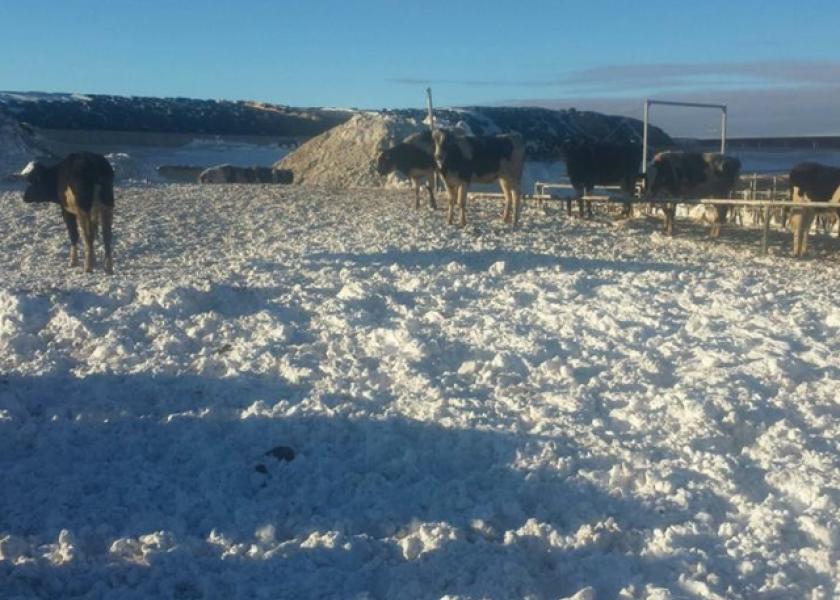Official Details Storm's Lasting Effects on Dairy Industry

It could take months to tally the true costs of a winter storm that killed an untold number of livestock and derailed New Mexico's dairy industry, the state's top agriculture official warned lawmakers Monday.
Agriculture Secretary Jeff Witte said he didn't want to venture a guess at the number of dairy cows and range cattle that were killed when a fierce winter storm dumped two feet of snow on New Mexico at the end of December.
Dairy operations and ranchers along the eastern side of the state were ready for the snow but not the gusts that came along with it. The strong winds formed drifts that overtook corrals, buried livestock and stalled milk production.
Freezing temperatures then set in, making for a brutal one-two punch.
Dairy Producers Reflect on Blizzard Losses
AgDay
"The snow and the winds came in so fast and just piled up over the top of the cattle in confined areas," Witte said. "There was no way to anticipate the impacts."
Witte said dairy producers and ranchers have been working with the Farm Service Agency for more than a month to tally losses as the state builds its case for a federal disaster declaration.
Estimates of possible livestock deaths hovered around 25,000 in the days following the storm. Industry experts say that level hasn't been reached in the official count but noted that dairies in New Mexico and neighboring West Texas marked some $25 million in lost milk production in the weeks following the storm.
Other concerns included health complications for the livestock that survived and had to ensure the cold temperatures while going unmilked.
Dairy operators are in survival mode, said Beverly Idsinga, executive director of the Dairy Producers of New Mexico.
"It's not even going to be the loss of the animals that's going to hit them the hardest. It's going to be the loss of production and the cows they're going to have to cull and all of that," she said.
Before the storm, New Mexico was ranked top in the nation for producing more milk with fewer cows, but Idsinga is worried the state will fall from that spot because producers won't be able to replace their animals due to the low price of milk and a reluctance to take on more loans.
Republican Gov. Susana Martinez and members of the state's congressional delegation have been pushing federal officials for a disaster declaration. Witte said the process, which could take up to six months, relies heavily on data that shows affected counties recorded losses of 30 percent or more.
Under one federal program, dairy operators can claim up to $125,000 in livestock losses, but Witte says that would cover only a fraction of their damages.
"It's going to take time for them to come back," he said.







